_682c2bf7d43f2.jpg)
Indian Test Cricket has witnessed some of the finest players across generations. The classic red-ball format is where real cricket belongs in the 'Whites', where the players weave a legacy with sweat, determination, and hard work, thrilling cricket fans worldwide. And just when everything seems fine, they announce the retirement of an iconic test career, without a planned goodbye or a ceremonious farewell. With Virat Kohli and Rohit Sharma's sudden exits, the Board of Control for Cricket in India (BCCI) comes under scrutiny for snubbing legends, overlooking their contributions, and letting them depart with a farewell in silence.
Here is a look at 10 Test Cricket legends who had a glorious career and a 'retirement with respect and honor', but without a farewell:
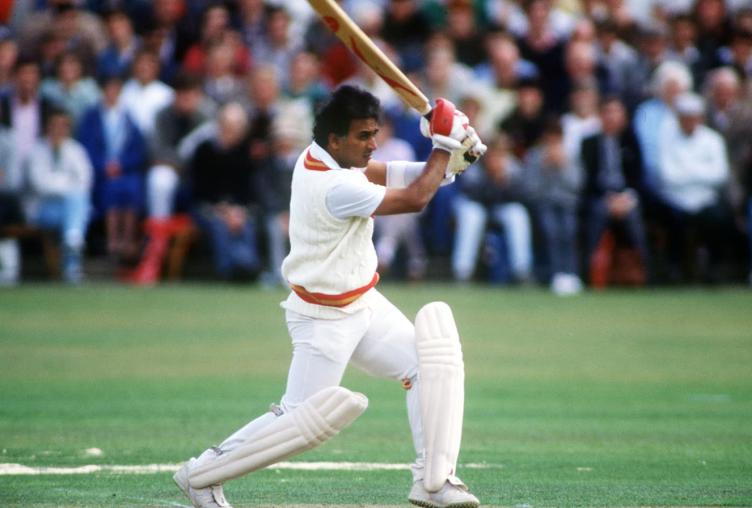 'The Little Master' could always manage to bring in runs in red-ball cricket, 34 tons in 125 matches with 10,122 runs (Image source: X)
'The Little Master' could always manage to bring in runs in red-ball cricket, 34 tons in 125 matches with 10,122 runs (Image source: X)One of the greatest and most successful opening batters of all time- Sunil Gavaskar, known for his perfect technique to tame fast bowlers, excellent defence, judgement, and a beautifully balanced play altogether. Gavaskar had a prolific test career, with 10,122 runs in 125 matches (214 innings) scored at an average of 51.12. He has 34 test centuries to his credit (30th surpassed Donald Bradman's 29), the highest number by a batsman in tests, which was a record until broken by Sachin Tendulkar. Gavaskar played 106 consecutive test matches for India, being the third batsman fastest to 5000 test runs and the first to 10,000 mark, and is the third highest run-scorer in a test series as a Captain (732 runs against West Indies in 1978-79[1].
It was in March 1987 when Sunil Gavaskar decided to hang up his boots after the fifth and final test against Pakistan in Bangalore, where he batted at a score of 96[2]. Despite scoring fairly well in test matches from 1985-87, Gavaskar retired. He cited that he just postponed his retirement till the Pakistan series; it would have come earlier at the end of the England tour only.
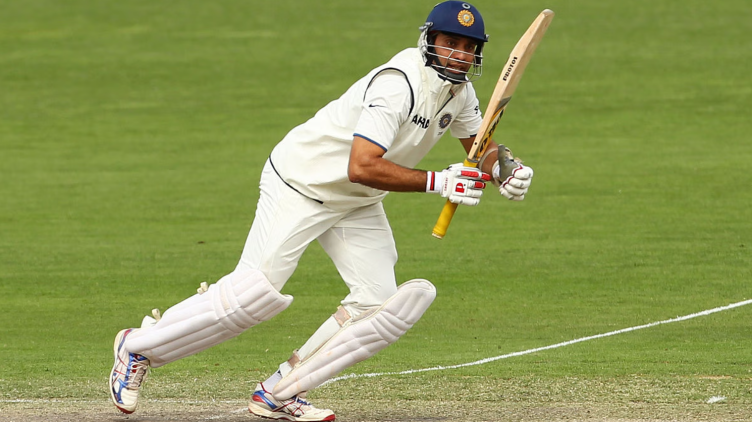 It was Laxman's magic that stood apart among the 'Big four': Tendulkar, Dravid, Ganguly, and the fourth one was him.
It was Laxman's magic that stood apart among the 'Big four': Tendulkar, Dravid, Ganguly, and the fourth one was him.
VVS Laxman was a sight to behold in Tests, with a comfortable stroke play and the ability to hit the ball on either side. This ability tormented the Australians, as much as they could admit after the 2003-04 tour that they never knew where to bowl Laxman. Bret Lee even went on saying once, "If you get Dravid, great. If you get Sachin, brilliant. If you get Laxman, it's a miracle." He played 134 matches, scoring 8781 runs in his test career. Laxman's most unforgettable innings with the bat came at Eden Gardens, where he hit 281 runs against his favorite opponent, Australia. And the 376-run partnership with Rahul Dravid in Adelaide, which stands to be the 3rd highest partnership for the fifth wicket[3]. Out of the 17 test tons to his credit, what stands out for VVS Laxman is the 167-run knock in Sydney, 2000, which was career-defining (as told to the media during the release of his autobiography, '281 and beyond' in 2018).
VVS Laxman chose a quiet ending, as quiet as his persona. As he began losing form in 2011, Laxman finally realized that it was time to walk away. Ahead of the two-test home series against New Zealand in 2012, VVS Laxman announced his retirement. Not even playing in front of his home crowd in Hyderabad for one last time[3].
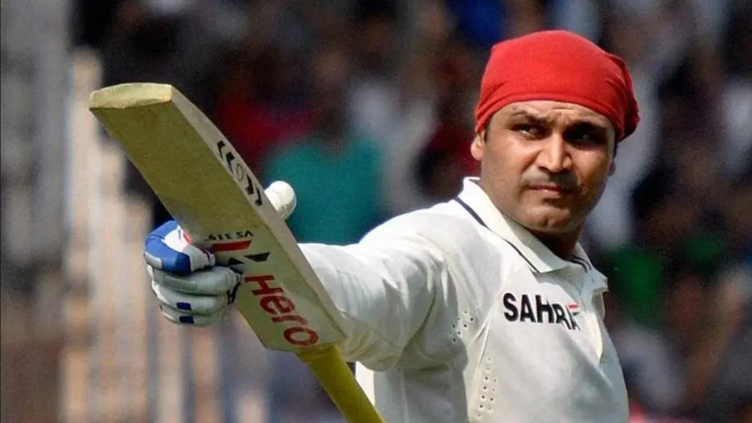 Sehwag continued exploiting bowlers in tests, scoring 8586 runs in 105 matches (Image source: PTI)
Sehwag continued exploiting bowlers in tests, scoring 8586 runs in 105 matches (Image source: PTI)It was Viru's fearlessness and the extraordinary boundary-hitting ability that was a class apart from others in his generation, where he wanted to score as quickly as he could. Virender Sehwag has scored test runs faster than anyone in history, that too with minimal footwork. He wasn't batting as Tendulkar's shadow, but had his niche. Sehwag became the first Indian to bring in a triple hundred in Multan, which came two tests after his dismissal at 195. Also, the first batter to score two triple-hundreds as well as the Indian player with the highest test double hundreds[4].
Sehwag is also the third player to score the most runs in a day (284), the third to hit the most number of fifties in consecutive matches (11), and the first to 5000 runs and 50 fielding dismissals. But the record run came to an end in 2012, when Sehwag didn't have the form against England. He was dropped by selectors soon after when he played his last against Australia in 2013, and Sehwag had to announce his retirement later[4]. That was it, India's most fearless batting stalwart and power-hitting opener put an end to his test career; no farewell, no ceremonious goodbye for his fans.
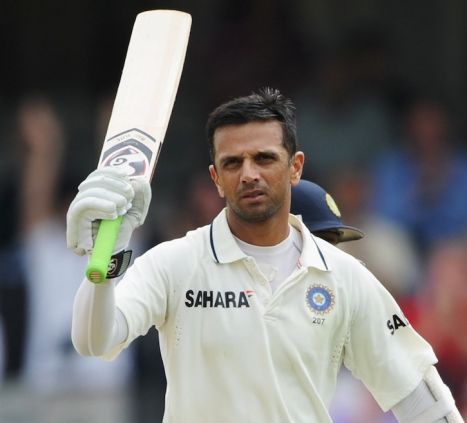 India's test specialist, Rahul Dravid, did receive a farewell in white-ball cricket, but not in tests
India's test specialist, Rahul Dravid, did receive a farewell in white-ball cricket, but not in testsThe Wall of Indian Cricket, Rahul Dravid kept it all steady, composed, and methodical. He made India emerge strong in conditions away from home. It was his hard work, intent, and concentration, Dravid spent an ample amount of time on the field, keeping hopes alive for India. In 2003, Adelaide, India managed to win a test in Australia, where Dravid batted for 835 minutes in two innings. Very soon, Dravid was at the crease again, this time for more than 12 hours, when he clinched a 270-run haul. It was India's first series win in Pakistan. He was impressive at Lords in 1996, followed by a breakthrough performance at Wanderers, bouncing back again in 2001. India emerged victorious against Australia, thanks to the 376-run partnership with VVS Laxman. Dravid's performances were commendable one after the other in those five years, even as a Captain leading his team on tours in England and the West Indies. Not to forget, when Dravid used to field in slips, he took 210 test catches, which is still a record, along with the most number of 90s (10) and the third fastest to 9000 runs (176)[5].
In 2011, Dravid was at his best, yet again, when he scored 461 runs, including three tons against England. He retired after the BGT (Border-Gavaskar Trophy) in Australia, leaving behind a legacy of 13288 runs in 164 test matches that he played[5].
 Gautam Gambhir announced his retirement from all forms of Cricket, and currently serves as the Head Coach of the Indian Cricket Team (2024-2027)
Gautam Gambhir announced his retirement from all forms of Cricket, and currently serves as the Head Coach of the Indian Cricket Team (2024-2027)Gautam Gambhir was instrumental to India's victories in the 2007 T20 World Cup and 2011 ODI World Cup. But he was also known for his top-order batter innings in Tests, making him a complete man for all three formats. Gambhir was admired for his ability in the Ranji Trophy, where he polished his technical skills to fit in the Indian Cricket team. He scored 50+ scores in 11 successive tests, equalling the legendary Vivian Richards. Gambhir also became the ICC Test player of the year 2009[6].
But it was after 2011 when the downfall began for Gambhir. India lost eight tests in a row, and Gambhir was a crucial added wicket for the loss. Very soon, serving as the back-up opener and being left out of the test team[6]. Gambhir played his last test in 2016, again without being selected, and left without a farewell match. Today, he is often remembered as an unsung hero behind major wins and titles, celebrated with records and memories.
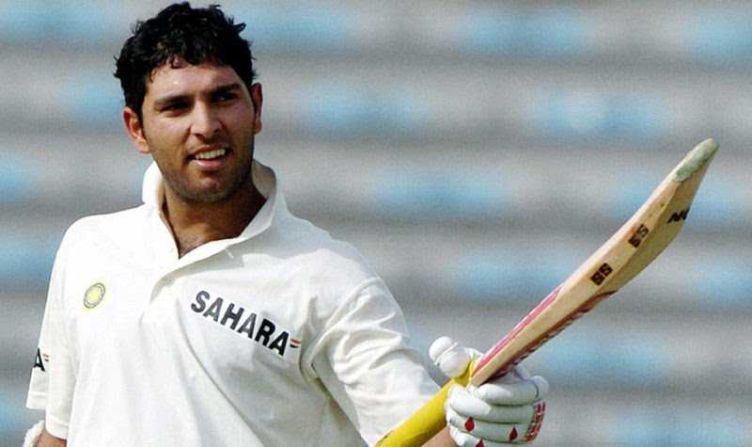 Yuvraj Singh's ODI records need no mention; he dominated the format for a while!
Yuvraj Singh's ODI records need no mention; he dominated the format for a while!
The man on the frontline for India's 2011 World Cup victory, Yuvraj Singh. He was India's middle-order great in ODIs ever since his debut in 2000. Yuvraj didn't have a glorious test career, as he has in white-ball cricket. He played 40 matches with 1900 runs, where he had three big innings to credit- A 100 in Lahore, 4-61 against Pakistan, and an 85 not out in Chennai while chasing 387 runs.
He did probe his mettle time and again, in T20s and ODIs, but life had other plans. Yuvraj suffered from a rare disease, germ cell cancer, in 2012, from which he recovered, but the form wasn't all the same after. He did make a comeback, but inconsistency kept on lingering in his performances[7]. With a series of in and outs, Yuvraj Singh finally announced his retirement from all forms of cricket in 2019. He was promised a last game as a farewell match when he passed the Yo-Yo test (a must-pass fitness test for Team India), which never came[8].
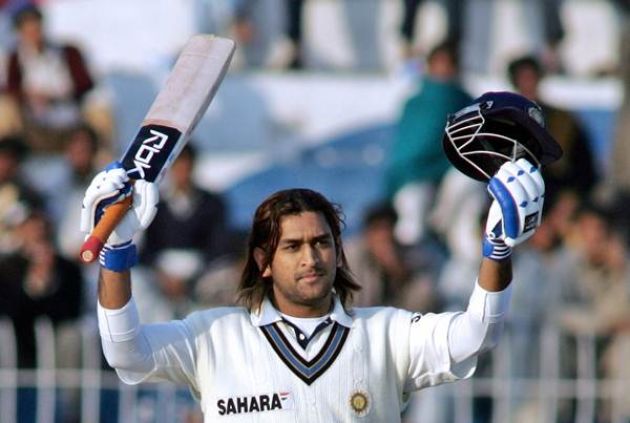 MS Dhoni's first century of his test career came in 2006, Faisalabad, Pakistan, where he smashed 148 runs
MS Dhoni's first century of his test career came in 2006, Faisalabad, Pakistan, where he smashed 148 runs
To start with, India won three major ICC titles across all formats under MS Dhoni's captaincy. In 2009, India was placed at the top of the table in ICC Test rankings for 18 months. Known for his unorthodox style, Dhoni had his own batting and wicket-keeping technique, and a unique leadership ability with a sense of calm that worked well enough for India. His six-hitting early in his career proved destructive for the opponents. Some of India's dominant years in test cricket came in the 60 tests led by MS Dhoni, where the men in blue had a 1.5 win-loss ratio. After a couple of losses, he built a new test team for India in 2013, soon becoming the first Captain to lead four wins for the country in a test series[9].
After losing to England 3-1, later in the third test against Australia in Melbourne, Dhoni announced his retirement. He put an end to a phenomenal career in whites, with 4876 runs in 90 matches at an average of 38.09, which includes six tons. MS Dhoni made the fifth most dismissals in his test career (294), third most stumpings (38), and the third most runs in an innings by a wicketkeeper (224), among other records[9]. The man leading India to its best in Test cricket had no final lap for him, or a guard of honor when he bid goodbye to the format. A press release, that's all.
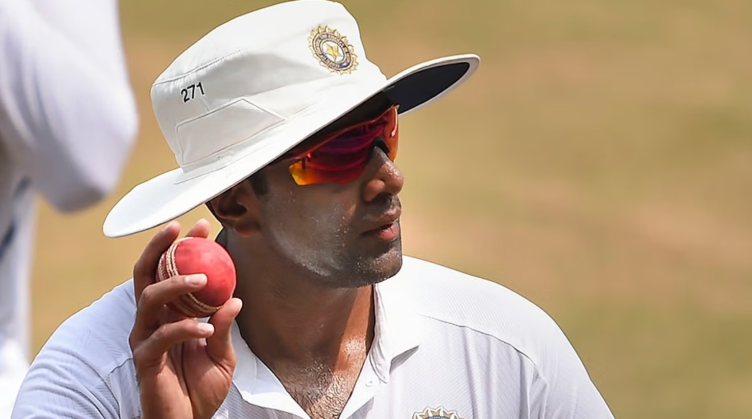 Ravichandran Ashwin: A dominant test legacy driven by stats and figures
Ravichandran Ashwin: A dominant test legacy driven by stats and figures
Ravichandran Ashwin was one of the leading off-spinners of his generation, who had the best skills in Test cricket. He combined his tactics of carrom ball, arm ball, and off breaks brilliantly with his sharp brain. Early in his career, Ashwin became integral to the team in limited overs, but it was in Tests that he became a quintessential talent right from his maiden test, where he took nine wickets. In the 106 test matches he played, Ashwin took 537 wickets, where he went on to be the fastest to 300 wickets, and the second fastest to 400. Four times in his test career, Ashwin had over 50 wickets to his credit. While playing at home in the 2016-17 season, R Ashwin took 27 wickets against New Zealand in three tests, 28 against England in five matches, and 21 against Australia in four tests[10].
Not only bowling, but Ashwin was quite impressive with the bat as a middle-order batsman. He scored 6 centuries and 14 fifties in his 14-year-long career, hitting 3503 runs. Ashwin has the most player of the series awards in tests (11), the fourth player with the most wickets taken bowled (109), among many other records. He called it off in 2024, mid-series after the third test of BGT, standing tall as the second-highest wicket-taker for India and the third-best spinner of all time[10]. But yet another cricket legend left, without getting a farewell match.
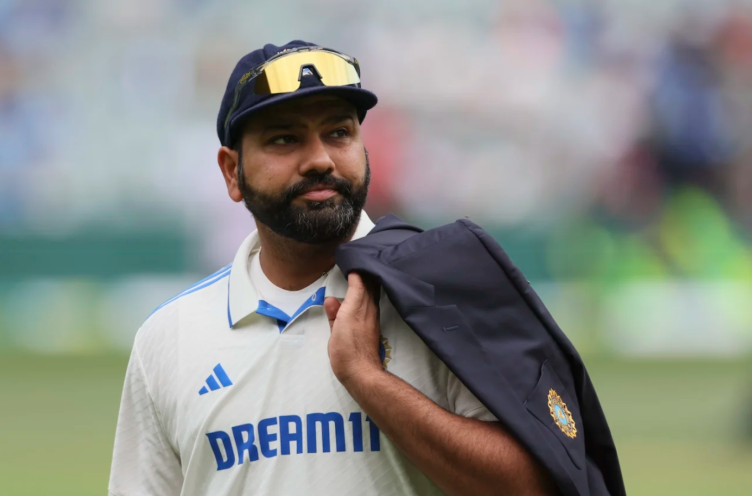 #End of Ro-Ko era trends as Rohit Sharma and Virat Kohli announce retirement from Test Cricket
#End of Ro-Ko era trends as Rohit Sharma and Virat Kohli announce retirement from Test Cricket After retiring from T20s in 2024, Rohit Sharma bids goodbye to the longer format of the game. A man with the talent and nuanced skills apt for the game, Rohit was persistent enough to land himself a crucial place in the team. He soon emerged as India's opener in white-ball cricket in 2012. Rightly called the 'Hitman', Rohit went on scoring big for his team with a series of spectacular sixes, which came so easily from him. He has 4301 runs in 67 test matches at an average of 40.57. He hit a century right on his test debut (177), and went on to score 12 such 100s along with 18 fifties. Rohit has smashed 88 sixes in his test career, and also went on to build the fourth-highest partnership for the seventh wicket (280)[11].
An able leader on the field who led India to winning the T20 World Cup (2024) and Champions Trophy (2025) and runner-up of the ODI World Cup and World Test Championship (WTC) in 2023, and a destructive opener for India, serving the country for years, didn't have a formal send-off[11]. His retirement came on May 7, 2025, at 19:29 hours, right after the announcement of the Test squad for the upcoming series against England in June.
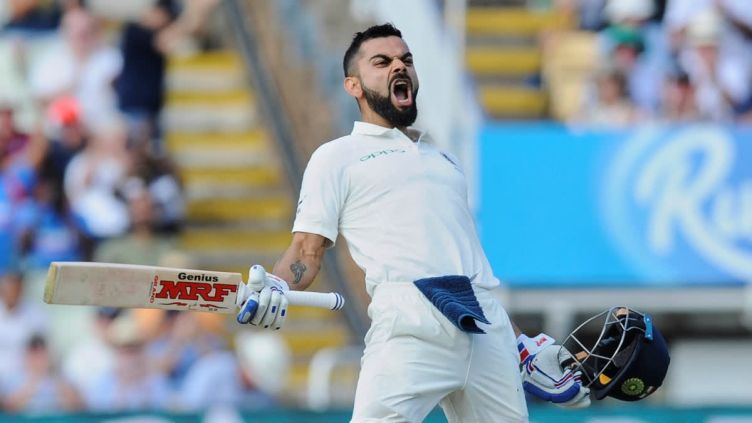 Virat Kohli is the only Indian and one of the two captains to score a century in both innings of a Test match
Virat Kohli is the only Indian and one of the two captains to score a century in both innings of a Test matchFinally, the man who ruled Whites for a generation, the one who made red-ball cricket thrilling again, Virat Kohli, says, "It's time." Virat Kohli dominated all forms of Cricket with his consistency and performance, at the same time bringing glory to the Tests again and leading to India's rise. He captained India in 68 matches from 2014-2022, winning 40 of them at a win-loss ratio of 2.35. Talking about his batting stats in Tests, Virat Kohli scored 30 hundreds and 31 fifties in his career, 7 double hundreds, the fifth fastest to 7000 runs (138), reaching to 9000 in 197 innings, the milestone of 5000+ runs and 50+ fielding dismissals, and finished off at a total of 9230 runs in 123 matches at an average of 46.85 with a highest score of 254[12]. With his batting records and milestones, a commendable leadership in Tests, Virat Kohli leaves a remarkable legacy behind, celebrated for generations to come.
Virat Kohli was likely to be included in the India vs England test series in June 2025, before which he informed about his retirement decision to the BCCI.
After winning the Champions Trophy 2025, Rohit Sharma and Virat Kohli denied retirement plans anytime soon. Two months on, as they announce their departure all of a sudden, the Internet is quick to blame BCCI and the top management. With netizens questioning, is this how the BCCI treats players who brought so much glory to the nation? Not even giving them a formal send-off or an honorable goodbye with a farewell match.
Clarke - Best of luck for England mate!!
Rohit - We'll try our best
He wanted tocontinue in test cricket ...BCCI forced him to retire
WE RUN BCCI....2 ICC TROPHY AS CAPTAIN SARRR ???????????? pic.twitter.com/jKEi3US4Ml
— Gaurav (@Melbourne__82) May 7, 2025
One of the users reacted, "If the BCCI did force Rohit out, it's a sad day for Indian Cricket. He deserved a better send-off." While another one stated, "Rohit Sharma was looking forward to the England series. This sudden retirement doesn't add up. What's going on behind the scenes?"
Head Coach Gautam Gambhir is also believed to have played a significant role in Rohit Sharma and Virat Kohli's retirement from Test Cricket at this point in time, criticized for waging internal tensions. According to a report by PTI, Gautam Gambhir is playing an influential role as the Head Coach in shaping up the team ahead of the next WTC cycle (2025-2027). Also, to mention, he has often advocated for the inclusion of fresh faces in the team. This might have accelerated the retirement of now veteran Rohit and Kohli.
A BCCI source was also reportedly saying, "The Gautam Gambhir era begins now. He was categorical that during the next WTC cycle, India needs to have fresh faces." The Head Coach and Chief Selector, Ajit Agarkar, are very much on the same page regarding Indian Cricket's future, where they look forward to a transition away from a reliance on any star power or senior player.
Another media report claims that Virat Kohli wasn't urged or requested to reconsider his decision at all. Instead, he was told clearly that the management doesn't guarantee him a fixed place in the Indian team due to his poor form in BGT 2024. Kohli scored 180 runs in the five-match test series. Former Indian player Mohammad Kaif said that the BCCI did not back Kohli; he wanted to play more test cricket and score runs out there, but there was no interest shown by the decision makers.
This is not the first time that BCCI has been criticized for not backing its players, including Ambati Rayudu (he even retired after not being selected in the 2019 World Cup), Shubhman Gill ousted from all squads in 2019, and many more.
Apart from these 10 cricket legends, Zaheer Khan, Suresh Raina, and Shikhar Dhawan also didn't receive the customary farewell, a standing ovation, or a final goodbye from their fans. They didn't have a scripted end to the test career as desired, it was simply a sudden departure that doesn't sink in easily. Well, a showman must always know when to leave the stage, so does a cricketer when to step away from the field. Yet, what lingers as a cricket fan is whether our favorite players should stay and prove their worth or leave before someone else shows them a way out? When fans want Rohit Sharma and Virat Kohli to stay 'for one more WTC (World Test Championship)', they decide to step down, calling it the right time. Leaving us with, as Vijay Merchant rightly puts it, "Retire when people ask why and not when"...